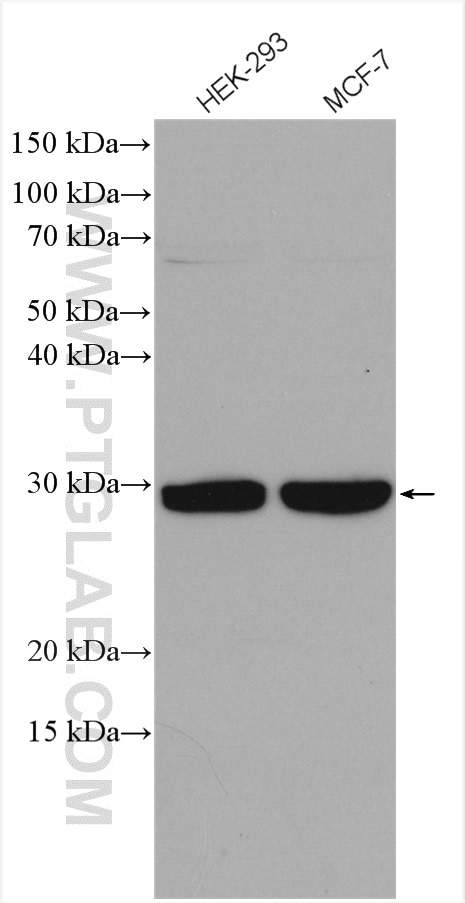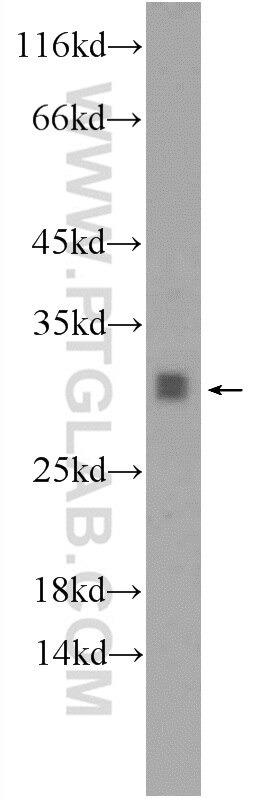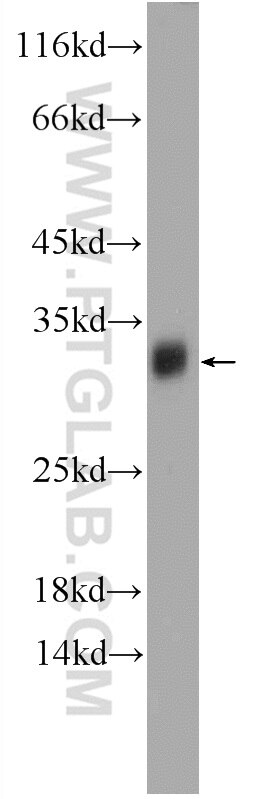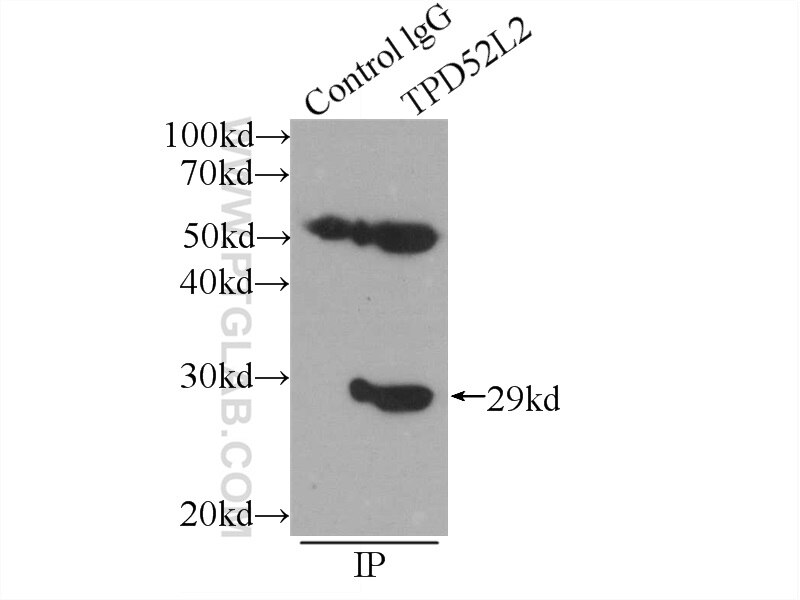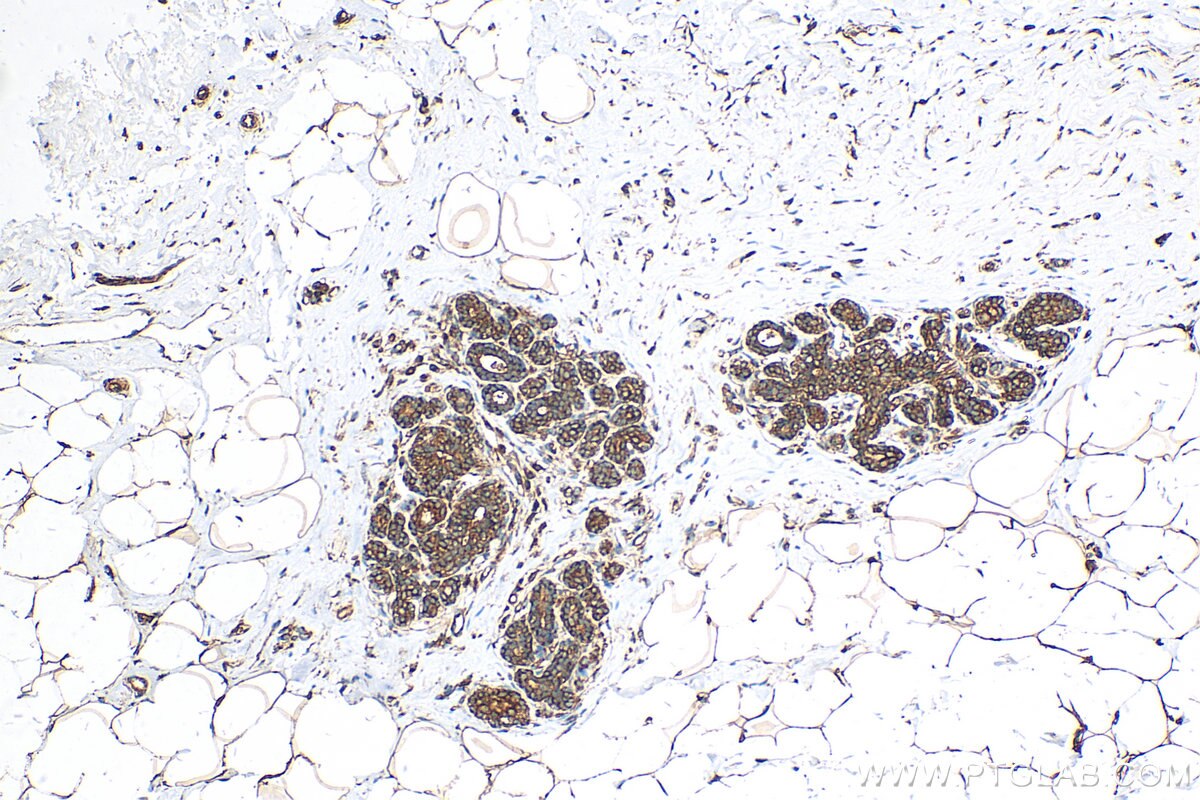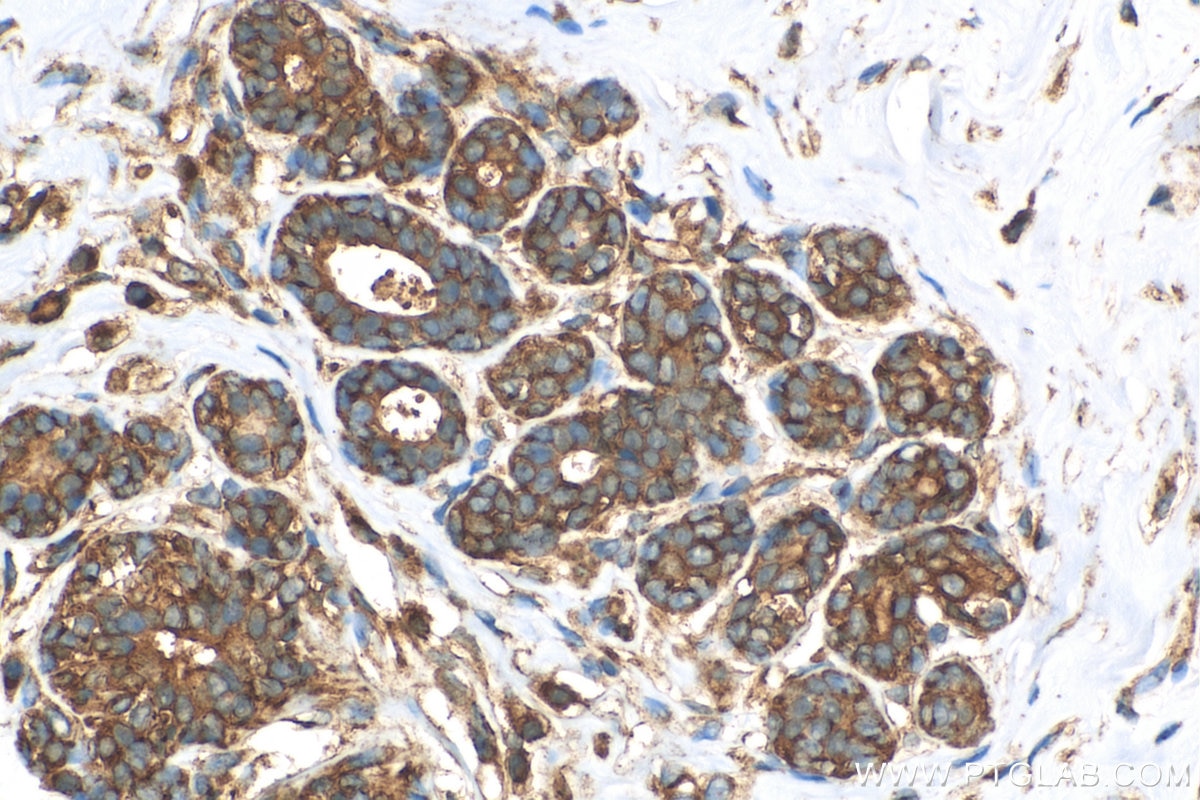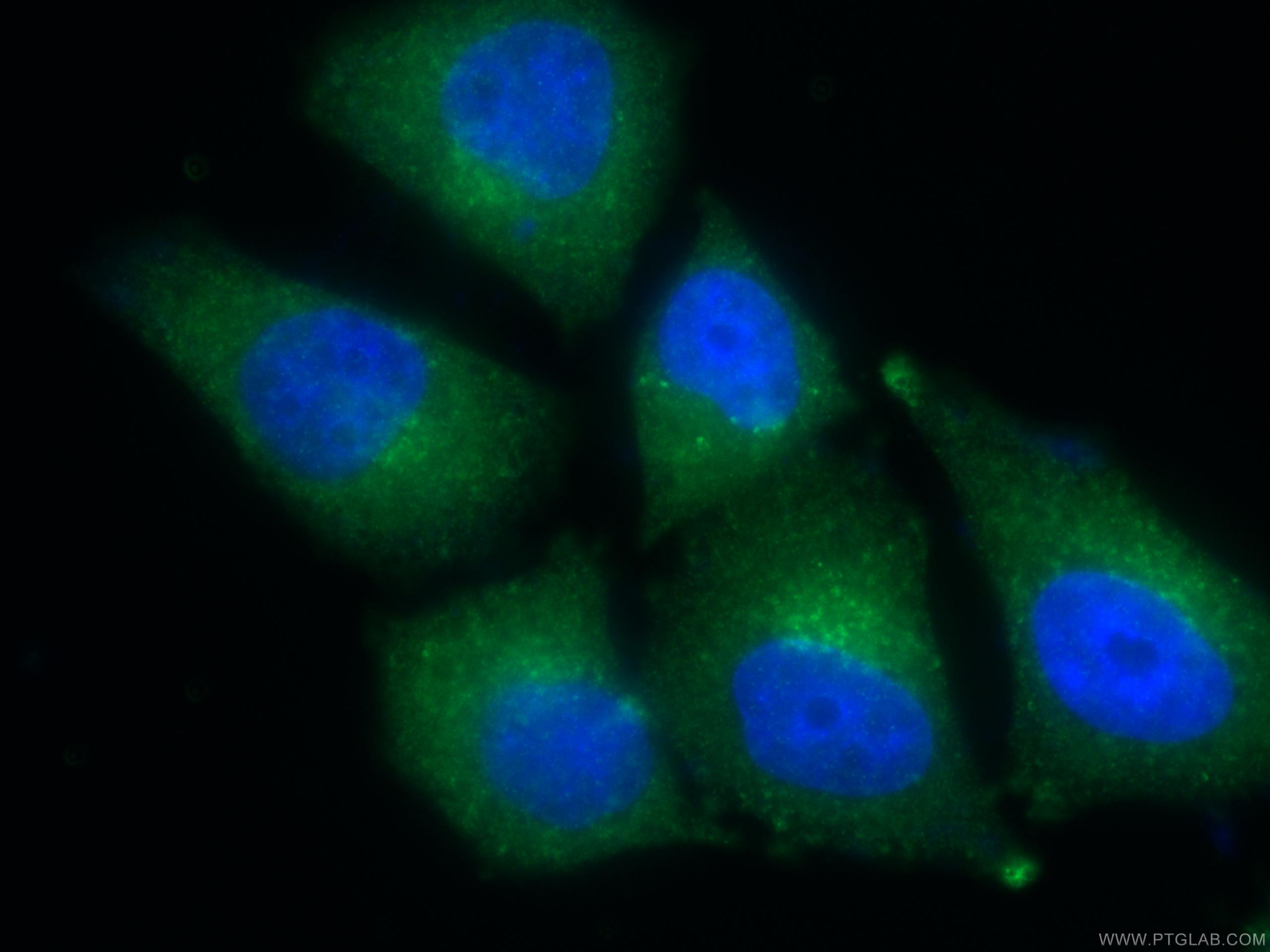- Featured Product
- KD/KO Validated
TPD52L2 Polyklonaler Antikörper
TPD52L2 Polyklonal Antikörper für WB, IHC, IF/ICC, IP, ELISA
Wirt / Isotyp
Kaninchen / IgG
Getestete Reaktivität
human, Maus, Ratte
Anwendung
WB, IHC, IF/ICC, IP, ELISA
Konjugation
Unkonjugiert
Kat-Nr. : 11795-1-AP
Synonyme
Geprüfte Anwendungen
| Erfolgreiche Detektion in WB | HEK-293-Zellen, MCF-7-Zellen, Maushirngewebe, Rattenhirngewebe |
| Erfolgreiche IP | HEK-293-Zellen |
| Erfolgreiche Detektion in IHC | humanes Mammakarzinomgewebe Hinweis: Antigendemaskierung mit TE-Puffer pH 9,0 empfohlen. (*) Wahlweise kann die Antigendemaskierung auch mit Citratpuffer pH 6,0 erfolgen. |
| Erfolgreiche Detektion in IF/ICC | HepG2-Zellen |
Empfohlene Verdünnung
| Anwendung | Verdünnung |
|---|---|
| Western Blot (WB) | WB : 1:500-1:1000 |
| Immunpräzipitation (IP) | IP : 0.5-4.0 ug for 1.0-3.0 mg of total protein lysate |
| Immunhistochemie (IHC) | IHC : 1:50-1:500 |
| Immunfluoreszenz (IF)/ICC | IF/ICC : 1:50-1:500 |
| It is recommended that this reagent should be titrated in each testing system to obtain optimal results. | |
| Sample-dependent, check data in validation data gallery | |
Veröffentlichte Anwendungen
| KD/KO | See 3 publications below |
| WB | See 8 publications below |
| IHC | See 2 publications below |
| IF | See 1 publications below |
| IP | See 1 publications below |
Produktinformation
11795-1-AP bindet in WB, IHC, IF/ICC, IP, ELISA TPD52L2 und zeigt Reaktivität mit human, Maus, Ratten
| Getestete Reaktivität | human, Maus, Ratte |
| In Publikationen genannte Reaktivität | human, Maus |
| Wirt / Isotyp | Kaninchen / IgG |
| Klonalität | Polyklonal |
| Typ | Antikörper |
| Immunogen | TPD52L2 fusion protein Ag2364 |
| Vollständiger Name | tumor protein D52-like 2 |
| Berechnetes Molekulargewicht | 206 aa, 22 kDa |
| Beobachtetes Molekulargewicht | 25-30 kDa |
| GenBank-Zugangsnummer | BC006804 |
| Gene symbol | TPD52L2 |
| Gene ID (NCBI) | 7165 |
| Konjugation | Unkonjugiert |
| Form | Liquid |
| Reinigungsmethode | Antigen-Affinitätsreinigung |
| Lagerungspuffer | PBS with 0.02% sodium azide and 50% glycerol |
| Lagerungsbedingungen | Bei -20°C lagern. Nach dem Versand ein Jahr lang stabil Aliquotieren ist bei -20oC Lagerung nicht notwendig. 20ul Größen enthalten 0,1% BSA. |
Hintergrundinformationen
Tumor protein D52-like proteins (TPD52) are small coiled-coil motif bearing proteins that were first identified in breast carcinoma. Three human TPD52 members had been identified, named hD52 (TPD52), hD53 (TPD52L1), and hD54 (TPD52L2). The most important characteristic of the protein family is a highly conserved coiled-coil motif that is required for homo- and heteromeric interaction with other TPD52-like proteins. TPD52 and related proteins have been implicated in cell proliferation, apoptosis, and vesicle trafficking. TPD52L2 has five isoforms produced by alternative splicing, and its multiple sites have been identified to be phosphorylated. Interaction of TPD52L2 with MAL2, a novel member of the MAL proteolipid family, may be required for the role of TPD52L2 in vesicle transport.
Protokolle
| PRODUKTSPEZIFISCHE PROTOKOLLE | |
|---|---|
| WB protocol for TPD52L2 antibody 11795-1-AP | Protokoll herunterladen |
| IHC protocol for TPD52L2 antibody 11795-1-AP | Protokoll herunterladenl |
| IF protocol for TPD52L2 antibody 11795-1-AP | Protokoll herunterladen |
| IP protocol for TPD52L2 antibody 11795-1-AP | Protokoll herunterladen |
| STANDARD-PROTOKOLLE | |
|---|---|
| Klicken Sie hier, um unsere Standardprotokolle anzuzeigen |
Publikationen
| Species | Application | Title |
|---|---|---|
Carcinogenesis TPD52L2 impacts proliferation, invasiveness and apoptosis of glioblastoma cells via modulation of wnt/β-catenin/snail signaling.
| ||
Cell Biosci Tumor protein D52 is upregulated in oral squamous carcinoma cells under hypoxia in a hypoxia-inducible-factor-independent manner and is involved in cell death resistance. | ||
J Biol Chem Tumor protein D54 binds intracellular nanovesicles via an extended amphipathic region. | ||
Int J Oncol Opposite effects of tumor protein D (TPD) 52 and TPD54 on oral squamous cell carcinoma cells. | ||
Biomed Res Int Tumor Proteins D52 and D54 Have Opposite Effects on the Terminal Differentiation of Chondrocytes. | ||
Neoplasma Silencing of TPD52 inhibits proliferation, migration, invasion but induces apoptosis of pancreatic cancer cells by deactivating Akt pathway.
|
Rezensionen
The reviews below have been submitted by verified Proteintech customers who received an incentive for providing their feedback.
FH Jerome (Verified Customer) (01-05-2020) | Puncta in the cytoplasm
 |
